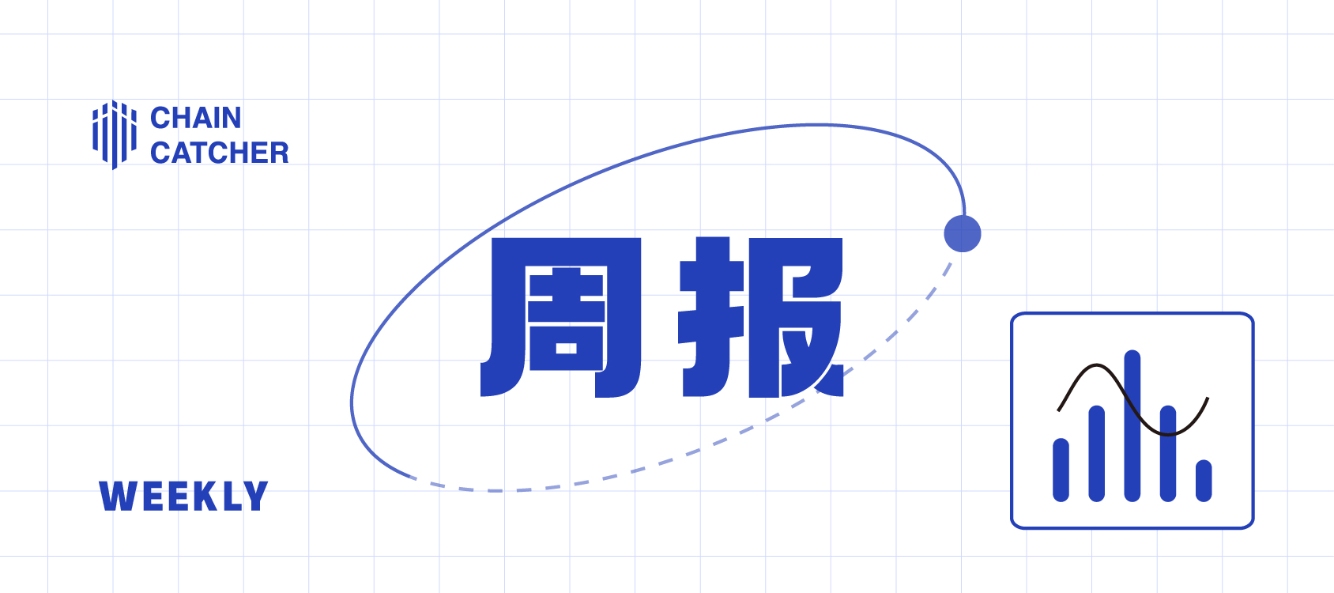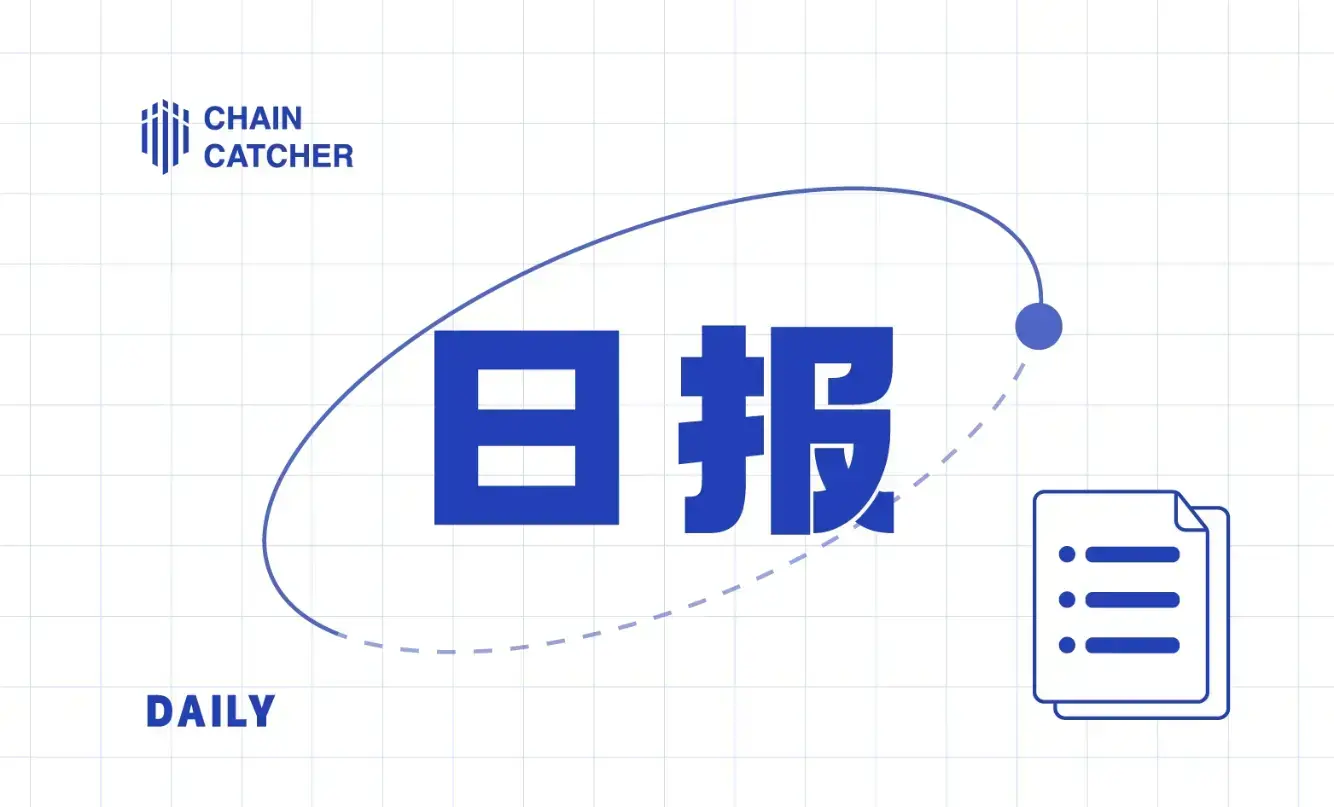Weekly Report | The SEC approves VanEck's 19b-4 filing for a spot Ethereum ETF; Vitalik: For an L2-centric ecosystem to succeed, it must understand and address challenges such as coordination; 28 global spot Bitcoin ETFs hold nearly as much Bitcoin as Satoshi Nakamoto
Organizer: Luan Peng, ChainCatcher
"What Important Events Happened This Week (5.20-5.26)"
1. Paraguayan Authorities Arrest Nearly 400 Bitcoin Miners in Sapucai
According to ChainCatcher and Bitcoin News, Paraguayan authorities arrested nearly 400 Bitcoin miners in Sapucai. This operation was conducted jointly by the police and the National Electricity Administration (ADE) as part of an investigation into suspected electricity theft.
(Source Link)
2. Trump: Ensure the Future of Cryptocurrency and Bitcoin is in the U.S., Not Driven Overseas
According to ChainCatcher, former U.S. President Donald Trump spoke at the Libertarian National Convention in Washington, D.C., promising to ensure the future of cryptocurrency and Bitcoin is in the U.S. rather than being driven overseas. He stated he would support the self-custody rights of the 50 million cryptocurrency holders nationwide and vowed to prevent Elizabeth Warren and her supporters from intervening in Bitcoin after securing votes. Additionally, Trump is firmly against the creation of a central bank digital currency.
(Source Link)
3. Uniswap Foundation: Holds $41.41 Million and 730,000 UNI as of Q1
According to ChainCatcher, the Uniswap Foundation officially released its unaudited quarterly financial summary as of March 31, 2024, stating that it holds $41.41 million and stablecoins (approximately $40.47 million, 750,000 DAI, and 180,000 USDC), as well as 730,000 UNI. Fiat currency (USD) and stablecoins will be used for funding and operational activities, while UNI will be used for employee token rewards. The expected funding usage period will last until the end of 2025, with specific allocations as follows:
Grants and incentives: $25.77 million will be distributed in 2024 and 2025. $2.94 million is reserved for previously committed grant distributions.
The remaining $12.7 million will be used to fund operational expenses before the end of 2025.
(Source Link)
4. Michael Saylor: 28 Global Bitcoin Spot ETFs Hold Bitcoin Amounts Close to Satoshi
According to ChainCatcher, MicroStrategy founder Michael Saylor posted on social media that the 28 global Bitcoin spot ETFs hold Bitcoin amounts close to that of the Satoshi address.
(Source Link)
5. RootData: Overview of Ethereum Foundation Personnel Structure
According to ChainCatcher, a study released by Web3 asset data platform RootData on the X platform indicates that the recent approval of spot Ethereum ETFs seems to have triggered a market reassessment of its fundamentals. Meanwhile, the actions of the Ethereum Foundation, including the roles of Justin Drake and Dankrad Feist as advisors to EigenLayer, have also drawn close attention and criticism from the community, further intensifying concerns about its transparency and neutrality.
According to information provided by RootData, the current database records 18 current and 8 former members of the Ethereum Foundation, including Executive Director Aya Miyaguchi and Protocol Support Lead Tim Beiko. Aya Miyaguchi previously managed operations in Japan for the Kraken exchange, while Tim Beiko was formerly a product manager at ConsenSys.
(Source Link)
6. U.S. SEC Approves VanEck's 19b-4 Filing for Spot Ethereum ETF
According to ChainCatcher, Fortune reported that the U.S. Securities and Exchange Commission has approved VanEck's spot Ethereum ETF to be listed on U.S. exchanges and has approved the asset management company's 19b-4 form. Matthew Sigel, head of digital asset mining research at VanEck, told Fortune, "This is one of the biggest regulatory U-turns by the SEC in recent years."
It is reported that this approval will also cover eight pending 19b-4 forms from companies such as Bitwise, BlackRock, and Fidelity.
(Source Link)
7. ChainCatcher Teams Up with Huobi HTX for "Web3 Future Night" Event in Ho Chi Minh City on June 6
According to ChainCatcher, Vietnam is becoming one of the new focal areas in the Web3 industry. ChainCatcher will collaborate with Huobi HTX to host the "Web3 Future Night" event, creating a vibrant and hopeful gathering for Web3 enthusiasts and practitioners in Vietnam.
The event is sponsored by Huobi HTX, co-hosted by Amazon Web Services, LBANK, 4E Exchange, SOEX, and BTC-BETA, with sponsorship from Mango Network, Aperture Finance, and Network3, and special support from RootData. The most active KOLs and community members in Vietnam will gather in Ho Chi Minh City for this grand event.
The party will be held on June 6 at Twilight Sky, 180 Ly Tu Trong, Ben Thanh Ward, District 1, Ho Chi Minh City. Everyone is welcome to mark their calendars and join this grand occasion.
(Source Link)
8. Vitalik: For an L2-Centric Ecosystem to Succeed, Challenges Like Coordination Must Be Understood and Addressed
According to ChainCatcher, Ethereum co-founder Vitalik Buterin stated that Layer 2 and sharding are often described as two opposing strategies for blockchain scaling in public discussions. However, when you delve into the underlying technology, a mystery emerges: the actual scaling methods are fundamentally the same. Both have some form of data sharding, both have fraud proofs or ZK-SNARK proofs, and both have methods for resolving cross {rollup, shard} communication. The main difference lies in who is responsible for building and updating these components and how much autonomy they have.
An L2-centric ecosystem technically achieves sharding very realistically, but it is a sharding that can create its own rules. This is very powerful and can inspire a lot of creativity and independent innovation. However, it also has key challenges, especially in coordination. For an L2-centric ecosystem like Ethereum to succeed, it needs to understand these challenges and address them head-on to gain as many advantages as possible from an L1-centric ecosystem while getting as close as possible to having the best features of both.
(Source Link)
9. Vitalik: The Crypto Economic Experiment Orb Land is Really Cool
According to ChainCatcher, Ethereum co-founder Vitalik Buterin posted on social media, "The crypto economic experiment Orb Land is really cool."
Eric Wall, the initiator of Taproot Wizards, launched a crypto economic experiment called "Orb Land," aiming to tokenize personal consulting services into NFTs. Holders of Orbs will gain the right to ask questions to the Orb creators and to resell this right. Technically, an Orb is an improved ERC-721 that supports the ERC-721 interface, and all transfer-related functions are restored. While Orbs can be displayed on OpenSea, they cannot be listed for sale on NFT trading markets like OpenSea, Sudoswap, or Blur. Additionally, Orbs manage ownership functions through auctions and the Harberger tax system.
(Source Link)
10. RootData: Over the Past Three Years, Only More Than 30% of Projects with FDV Under $1 Billion and Not Listed on Binance Have Experienced Valuation Inversions
According to ChainCatcher, a study released by Web3 asset data platform RootData on the X platform analyzed 113 projects that have not been listed on Binance since 2021 and have an FDV (Fully Diluted Valuation) under $1 billion, of which 73 projects experienced valuation inversions. RootData's research indicates that as project valuations increase, their FDV gradually shows a negative correlation, particularly evident in projects valued between approximately $300 million and $1 billion. These projects with valuation inversions have an average valuation of $120 million, significantly higher than the median valuation of $50 million for the total sample (113 projects), indicating that over 60% of projects have inflated valuations in the primary market.
In the previous bull market cycle, many projects' FDVs closely followed BTC trends, showing a high correlation, while now, as BTC is at historical highs, the correlation of some projects' FDVs with BTC has significantly decreased. Considering the highly emotional trading characteristics of the crypto market, the significant decrease in correlation may also reveal that the underlying reasons are related to the current innovation dilemma in the crypto market.
Earlier, ChainCatcher reported that Binance announced it would strengthen support for small and medium-sized cryptocurrency projects, inviting teams and projects with good fundamentals and sustainable business models to apply for listing on Binance, including direct listings, Launchpools, Megadrops, etc., to promote the continuous development of the blockchain ecosystem.
"What Exciting Articles Are Worth Reading This Week (5.20-5.26)"
1. “From Internet Celebrity Dog to Crypto Legend: Shiba Inu Kabosu and the MEME Culture It Led”
With its crossed front legs, tilted cute face, and determined eyes… this is the "Doge," the meme star that has swept the globe for over a decade. On May 24, the star dog "Doge," the prototype Shiba Inu Kabosu—19 years old—passed away in the embrace of its owner.
For many cryptocurrency enthusiasts, the name "Kabosu" may not be familiar, but the shadow of Dogecoin has certainly appeared in their crypto wallets to some extent.
Beyond the cryptocurrency world, Doge has long been a legendary internet celebrity dog.
With the booming development of global blockchain technology, Web3 is gradually becoming a new driving force for technological innovation. In this global technological wave, Vietnam, as a rising star in the Asian market, is rapidly emerging as a key player in the Web3 industry. Looking ahead to the new year, Vietnam's role in Web3 technological innovation and crypto compliance is becoming increasingly prominent.
To accelerate the development of Web3 in Vietnam and build a platform for in-depth communication, the well-known Web3 media ChainCatcher has teamed up with Huobi HTX to co-host the "Web3 Future Night" event. This event will be grandly held in Ho Chi Minh City during the GM Vietnam 2024 event. It will attract Vietnam's most influential KOLs, enthusiastic community members, talented developers in the crypto industry, and visionary project founders to gather and discuss the future development of Web3.
3. “U.S. SEC Finally 'Releases' Ethereum Spot ETFs Successfully!”
At around 5 a.m. Beijing time on May 24, the U.S. Securities and Exchange Commission approved the 19b-4 forms for eight spot Ethereum ETFs, with the issuers being Grayscale, Bitwise, iShares, VanEck, ARK & 21Shares, Invesco & Galaxy, Fidelity, and Franklin.
Everyone was waiting for this historic moment, and the SEC's official website crashed multiple times.
Previous reports indicated that on Tuesday, the SEC requested exchanges to expedite the update of the 19b-4 applications. In the following two days, all eight issuers, except Hashdex, submitted their final revised 19b-4 forms before the deadline. Additionally, the S-1 forms (the prospectus documents for potential issuers) will be approved after the 19b-4 forms, allowing each Ethereum spot ETF to prepare for listing.
Moreover, it is expected that the scale of Ethereum ETFs will initially be smaller than that of Bitcoin ETFs. For example, the Grayscale Ethereum Trust currently holds about $11 billion in assets, which is much smaller than the scale of the company's Bitcoin fund before conversion.
On May 23, Binance announced that the second phase project for its token issuance platform Megadrop is Lista (LISTA), a liquid staking stablecoin LSDfi protocol within the BNB Chain ecosystem.
The total issuance of LISTA tokens is 1 billion, with an initial circulation of 230 million, and 100 million will be issued on the Megadrop platform (accounting for 43% of the initial circulation). Users can participate in mining by locking BNB.
Since the controversy over "high FDV + low circulation," Binance adjusted its related listing policies, and Lista is the first project it chose to launch, attracting significant user attention.
5. “With $150 Million in Funding, Why is Farcaster Attracting Major VCs to Bet on It?”
Recently, the decentralized social track star product Farcaster completed a $150 million Series A funding round led by the established Web3 investment firm Paradigm, with participation from several well-known crypto capital firms, including a16z crypto, Haun, USV, Variant, and Standard Crypto, at a valuation of $1 billion.
According to relevant pages from Rootdata, this investment in Farcaster is also Paradigm's second bet in the SocialFI track after the seed round funding for friend.tech. This is also a16z's first bet on a decentralized social network.
According to Dune Analytics data, as of May 20, Farcaster's seven-day daily active users approached 45,000, an increase of 30% since the peak period of the Frames craze on February 11.
6. “Web3 Games Become the Traffic Bearer for TON, Public Chains Compete in the Gaming Track”
Since March, the price and market value of TON tokens have almost steadily risen. As of May 22, TON's market value was approximately $22 billion, an increase of over 155% since early March.
Behind the growth of TON's market value, its ecological mini-games Notcoin, Catizen, etc., have played a significant role.
According to Jack Booth, market director of the TON Foundation, Notcoin's user base grew to 35 million in almost three months, and the Notcoin token NOT was recently listed on exchanges like Binance and OKX, reaching a market value of $820 million within just one hour.
Another TON ecological mini-game, Catizen, officially disclosed that as of May 17, Catizen has attracted nearly 6 million players, with daily active users close to 500,000, on-chain users reaching 260,000, and on-chain transaction volume exceeding 2 million.
As one of the entry points for mass adoption, Web3 games have always been a field that major public chains cannot ignore. Currently, TON is gaining significant traffic through Web3 social mini-games. Which other public chains have active gaming users, and which are actively expanding their gaming offerings?
Web3 games seem to have entered a strong recovery phase.
Recently, with the social mini-game Notcoin (NOT) backed by 900 million active Telegram users launching simultaneously on both Binance and OKX, Web3 games have once again attracted massive attention in the crypto market.
According to Jack Booth, market director of the TON Foundation, compared to the peak period of the first-generation Web3 game king Axie Infinity, which had 2 million daily active users, Notcoin achieved 6 million daily active users during its mining phase, growing to 35 million users in almost three months.
On May 16, Notcoin's official data showed that after being listed on various exchanges for just one hour, its market value surpassed $820 million.
In addition to Notcoin's impressive growth, the blockchain game report released by DappRadar and the Blockchain Game Alliance for April shows a clear growth trend in the entire blockchain gaming market, with an average of 2.9 million unique active wallets (dUAW) per day in April, a 17% increase compared to March.
Footprint Analytics data indicates that in April, the average daily active users (wallets/players) in blockchain games exceeded 3 million.
Furthermore, the DappRadar report states that the investment scale in the blockchain gaming sector reached $988 million in April, setting a new high since January 2021.
8. “How Matrixport's Strategic Investments Help Users Capture Excess Returns?”
"Running for 134 days with a return of 133.99%," this was the final return of the first subjective options strategy "Liuyuan No. 1" released by miner Zhao Bei on the Matrixport platform when it closed on May 2. Zhao Bei became famous for the operational returns of this product, with group members urging, "Quickly launch a new strategy; I want to participate in the next subscription."
On May 7, the second phase product "Liuyuan No. 2" was launched for subscription, starting with 5 ETH, targeting a return rate of 3 times, and received enthusiastic user interest, hoping for a repeat of the legendary returns.
The "Liuyuan" series of subjective options strategies released by miner Zhao Bei on the Matrixport platform is an actively managed options strategy product, operating similarly to traditional financial fund products, meaning it offers users the opportunity to invest in a fund that pools crypto options product strategies, managed by specialized traders (akin to "fund managers"). This allows novice users to participate in options investments without needing to learn or understand the underlying knowledge and operational logic of options.
The success of the "Liuyuan" options strategy is inseparable from the support and technical backing of the Matrixport platform, which has facilitated the generation of subjective strategies and other investment products.
Through Matrixport's strategy investment products, professional traders with operational expertise can "fund" their trading strategies, allowing users to participate by purchasing "fund" shares. The traders will flexibly adjust the investment portfolio based on market conditions to achieve the best investment returns, and participating users only need to share a portion of the profits with the traders at the end of the "fund."
Currently, Matrixport's strategy investment products cover quantitative strategies (arbitrage, CTA trend tracking, long/short), subjective trading strategies, private domain strategies, etc., to meet the needs and risk preferences of different investors.
9. “U.S. SEC's 180-Degree Turn: Ethereum Spot ETF Approval Marks a Key Moment”
This morning, news revealed that the U.S. Securities and Exchange Commission requested exchanges to expedite the update of the 19b-4 applications. Bloomberg ETF analysts Eric Balchunas and James Seyffart raised the probability of approval for spot Ethereum ETFs from 25% to 75% after related rumors, later correcting that 75% specifically refers to the approval probability of the 19b-4.
As a result of this news, the ETH price quickly broke through $3,600, peaking at $3,693, with a 24-hour increase of over 19%.
10. “Dragonfly Partner: Why Have All Low Circulation/High FDV Tokens Dropped?”
In recent days, discussions about "high FDV low circulation tokens" have heated up, with many opinions suggesting that VC tokens have become the culprits of this round of "non-intervention bull market." Dragonfly partner Haseeb used data to refute some viewpoints, asserting that for VCs, astronomical project valuations also lead to unlocking dilemmas. This makes LPs perceive this asset class as illusory; although it looks good on paper, it is actually terrible, and VCs do not wish for this. Asset prices gradually stabilizing and rising over time is what most people hope for.















